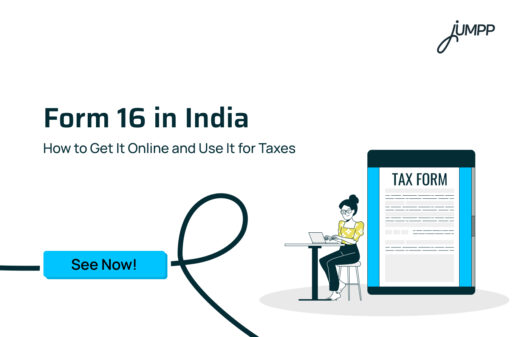Gratuity Meaning: Rules, Process, Calculation and Employee Rights

We have all heard about gratuity, but how many of us truly understand our rights as employees in India or the gratuity meaning? It is a legal right that every eligible employee is entitled to receive after completing the required years of service with an organisation.
Let us read about the gratuity rules in India!
What is gratuity?
The meaning of gratuity is simple. It is a lump sum monetary payment given by an employer to an employee as a token of appreciation for long-term service, loyalty, and contribution to the organisation. This payment is a significant retirement benefit aimed at providing financial security to employees after their service ends.
How Gratuity Works in India?
Gratuity is not deducted from your monthly salary; it is tax-free up to twenty lakh rupees, and it is calculated using a fixed formula under the Payment of Gratuity Act. The amount increases with your years of continuous service and your last drawn salary.
Gratuity Calculation Formula
The standard formula for calculating gratuity in India, specifically for employees covered under the Payment of Gratuity Act, 1972, is
Gratuity = (Last drawn salary × 15 × Number of years of service) ÷ 26
Last drawn salary:
This includes the basic salary and dearness allowance. It does not include bonuses, commissions, or house rent allowance.
15 ÷ 26:
This represents fifteen days of wages for every completed year of service, calculated on the basis of a twenty-six-day working month.
Number of years of service:
This is the total number of completed years of continuous service. If the final year of service is six months or more, it is rounded up to one full year.
For example, seven years and eight months is counted as eight years, while seven years and four months remains seven years.
If your last drawn salary is ₹35,000 and you have completed nine years of service, your gratuity will be:
₹35,000 × 15 × 9 ÷ 26 = ₹1,81,731
What is the gratuity form?
The term “gratuity form” refers to statutory forms prescribed under the Payment of Gratuity (Central) Rules, 1972. Each form serves a specific purpose.
- Form F: Nomination form for employees
- Form I: Application for gratuity by an employee
- Form J: Application for gratuity by a nominee after the employee’s death
- Form K: Application for gratuity by a legal heir if the employee died without a valid nomination
- Form L: Notice issued by the employer detailing the gratuity calculation and the payable amount
- Form M: Notice of rejection or refusal of gratuity payment, with reasons stated
Gratuity Rules in India: Key Provisions under the Payment of Gratuity Act, 1972
In India, gratuity is regulated by a well-defined legal framework under the Payment of Gratuity Act, 1972. It applies to every organisation in India that has ten or more employees, regardless of the industry. Once an organisation crosses this limit, even for a single day, the Act continues to apply to it permanently, even if the employee count falls later.
The key gratuity rules are explained below.
Gratuity Applicability and Coverage
The Payment of Gratuity Act applies to establishments such as factories, mines, and plantations. It also extends to shops and commercial establishments that employ ten or more people. Once the Act becomes applicable to an organisation, it continues to remain in force even if the employee count later falls below ten.
Gratuity Eligibility in India
An employee must complete at least five years of continuous service with the same employer.
Triggering events:
Gratuity becomes payable when employment ends due to:
- Superannuation
- Voluntary retirement or resignation after five years
- Death
- Total disablement
In the case of death or disablement, the five-year service condition is waived.
Gratuity Taxation Rules
- For government employees, the entire gratuity amount is exempt from tax.
- For private sector employees covered by the Act, the tax exemption is limited to the least of the following: twenty lakh rupees, the actual amount received, or the amount calculated using the statutory formula.
- For employees not covered under the Act, a partial exemption applies. It is limited to the least of twenty lakh rupees, half a month of average salary for every completed year of service, or the actual gratuity received.
Gratuity Nomination
Nomination allows an employee to designate a person who will receive the gratuity amount in the event of the employee’s death.
- Mandatory requirement:
Every employee who completes one year of service must file a nomination.
- Nominee options:
The nomination must be made in favour of a family member if the employee has a family. Only if the employee has no family can the nomination be made in favour of another person.
- Updating nomination:
An employee may update or modify the nomination at any time if family circumstances change.
- Legal heir protection:
A nomination in favour of a non-family member becomes invalid if the employee has family members at the time of making the nomination.
Forfeiture of Gratuity
The Act allows an employer to forfeit gratuity, either partially or fully, in specific situations. These include misconduct such as riotous or disorderly behaviour, acts of violence, or willful damage to property. Forfeiture to the extent of the damage is permitted. Gratuity may also be forfeited for acts that involve moral turpitude committed during the course of employment.
Ready to invest some part of your salary? Explore a trusted mutual fund investing app where you can begin with simple, disciplined investments and access technical tools to support your decisions!
Key Differences Between Gratuity and Pension
Gratuity and pension are both important post-employment benefits, but they serve very different purposes and operate under different rules.
| Feature | Gratuity | Pension |
| Type of Benefit | One-time lump sum payment | Regular monthly payment |
| Purpose | Immediate financial support after employment ends | Long-term income support during retirement |
| Paid By | Employer | Employer or pension fund, depending on the scheme |
| Eligibility | Minimum five years of continuous service (waived for death or disability) | Depends on the pension scheme and the length of service requirements |
| Payment Timing | Paid once at the time of separation | Paid periodically, usually every month |
| Tax Treatment | Tax-free up to twenty lakh rupees | Partially taxable depending on the type of pension |
| Nomination | Filed through Form F under the Gratuity Act | Done as part of the pension scheme enrollment |
| Contribution | Entirely paid by the employer | May involve employer contribution, employee contribution or both, depending on the scheme |
Conclusion
Gratuity is a long-term financial safeguard and a recognition of the time, effort, and loyalty an employee has invested in an organisation. Knowing how gratuity works ensures that when the time comes to leave an organisation, you are prepared, protected, and fully aware of what you are entitled to receive as part of your service journey.
Looking for smart ways to grow your post-retirement wealth? Explore the best retirement investment options that help you secure your financial future with smarter, long-term planning.
Gratuity Meaning- FAQs
Gratuity is a monetary benefit given by an employer to an employee at the end of their service period as a token of appreciation for long-term contribution. It is recognised as a retirement benefit and is governed by statutory rules such as the Payment of Gratuity Act, 1972. It is separate from monthly salary components.
Gratuity represents a compulsory payment that acknowledges loyalty, tenure, and long-term service. In employment terms, it is not a voluntary gift but a statutory payout intended to offer financial support when an individual resigns, retires, or exits long-term employment.
Gratuity is calculated using the formula defined under the Payment of Gratuity Act, 1972. The formula is (last drawn basic salary plus dearness allowance) × 15 × number of completed years of service ÷ 26.
Yes, you will receive gratuity upon resignation if you have completed at least five years of continuous service with your employer. This five-year requirement is waived only in cases of death or permanent disability.
An employer cannot legally refuse to pay gratuity to an eligible employee who has completed the mandatory years of service. Refusal is permitted only in cases involving serious misconduct, willful harm, or actions that cause financial loss to the employer.
Yes, it is compulsory for all organisations with ten or more employees to pay gratuity. Once an organisation becomes covered under the Payment of Gratuity Act, it must continue to provide gratuity.






